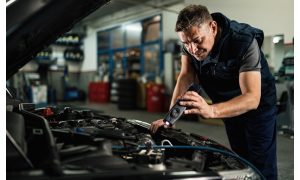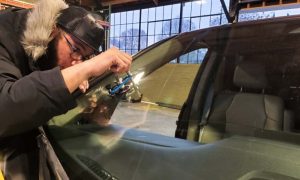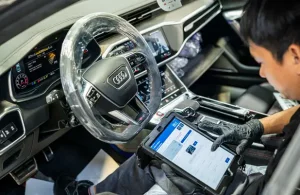How to Protect Your Investment After Buying a Classic Car

Owning a classic car is more than just a hobby — it’s a passion and, for many, a carefully planned financial investment. Whether you’ve purchased a pristine showpiece or a beautifully restored driver, the steps you take after bringing your classic home will have a big impact on its value and longevity.
Classic cars can appreciate over time, but only if they’re maintained, protected, and cared for properly. Here’s a comprehensive guide to ensuring your new automotive treasure remains both a source of pride and a smart financial asset.
1. Store It Properly
One of the most important ways to preserve your classic car’s value is proper storage. Unlike daily drivers, classic cars benefit from a controlled environment.
- Climate Control — Temperature and humidity fluctuations can damage paint, leather, and wood trim. A climate-controlled garage helps prevent rust, warping, and fading.
- Cover Protection — Use a breathable, fitted car cover to shield the vehicle from dust, debris, and accidental scratches. Avoid cheap plastic covers, which can trap moisture.
- Security Measures — Install an alarm or use a secure storage facility with 24-hour monitoring to protect against theft.
The better you control the environment, the longer your classic will retain its condition — and its value.
2. Follow a Consistent Maintenance Schedule
Even if your classic car spends most of its time parked, it still needs regular maintenance. Fluids can degrade, seals can dry out, and batteries can lose charge.
- Oil Changes — Use high-quality oil suited for older engines, and change it at least once a year.
- Fluids and Filters — Replace brake fluid, coolant, and transmission fluid on schedule, even if mileage is low.
- Battery Care — Keep the battery charged with a trickle charger to avoid starting issues.
A well-documented maintenance routine will not only keep your car running smoothly but also boost resale appeal to future buyers.
3. Drive It — But Smartly
Letting a car sit for too long can cause more harm than occasional use. Driving your classic car periodically helps keep mechanical systems in good working order.
- Avoid Harsh Conditions — Skip drives in rain, snow, or on salted roads.
- Warm It Up — Give the engine time to reach operating temperature before pushing it harder.
- Short, Controlled Trips — Aim for sunny, dry days and smooth roads to minimize wear and tear.
Moderate use keeps seals lubricated, prevents flat spots on tires, and ensures your classic stays road-ready.
4. Keep It Clean and Detailed
Regular cleaning and detailing preserve both aesthetics and structural integrity. Dirt, dust, and road grime can cause microscopic scratches or corrosion over time.
- Hand Wash Only — Avoid automatic car washes, which can be too abrasive.
- Wax and Protect — Apply a high-quality wax or paint sealant to guard against UV damage and contaminants.
- Interior Care — Condition leather, polish wood, and vacuum carpets to maintain a fresh interior.
Keeping the car spotless not only enhances its beauty but also signals to buyers that it’s been meticulously maintained.
5. Document Everything
Paperwork is one of the most underrated aspects of protecting a classic car’s value. The more history you can present to a future buyer, the more confident they’ll be in paying top dollar.
- Service Records — Keep receipts for every oil change, part replacement, and repair.
- Restoration Photos — Document any upgrades or restoration work with before-and-after images.
- Ownership History — Maintain a file with previous titles, registrations, and appraisals.
This kind of documentation can be just as valuable as the car itself when it comes time to sell.
6. Insure It Properly
A classic car needs specialized insurance coverage that accounts for its true value, not just standard market depreciation. Agreed-value insurance ensures you’ll be compensated for the full, agreed-upon value if the car is damaged or stolen.
When selecting coverage:
- Compare specialty insurers who understand collector vehicles.
- Confirm mileage restrictions, storage requirements, and usage limits.
- Review and update your policy annually to reflect market changes.
7. Be Strategic About Modifications
While customization can make a car more enjoyable to own, not all modifications are good for its investment value. Collectors often prefer original or period-correct vehicles.
- Reversible Changes — If you upgrade, keep the original parts to restore the car later.
- Tasteful Enhancements — Focus on safety and drivability improvements that don’t compromise authenticity.
- Avoid Over-Restoration — Excessively modernizing a classic can turn away potential buyers.
8. Think About Long-Term Value
Even if you bought your classic for personal enjoyment, keeping resale in mind will help guide decisions on maintenance, usage, and storage. Understanding market trends and demand for your particular make and model ensures you’re always making choices that protect its worth.
For those who used financing a classic car to make their purchase, preserving long-term value can also make it easier to pay off the loan or recoup costs when selling.
Buying a classic car is a thrill, but the real challenge — and reward — comes in protecting your investment. Proper storage, regular maintenance, careful driving, thorough documentation, and smart insurance coverage will ensure your vintage beauty stays in top condition and retains its value.
By approaching ownership with both passion and foresight, you’ll not only enjoy the pride of driving a timeless machine but also the confidence that you’ve made a wise financial move.





